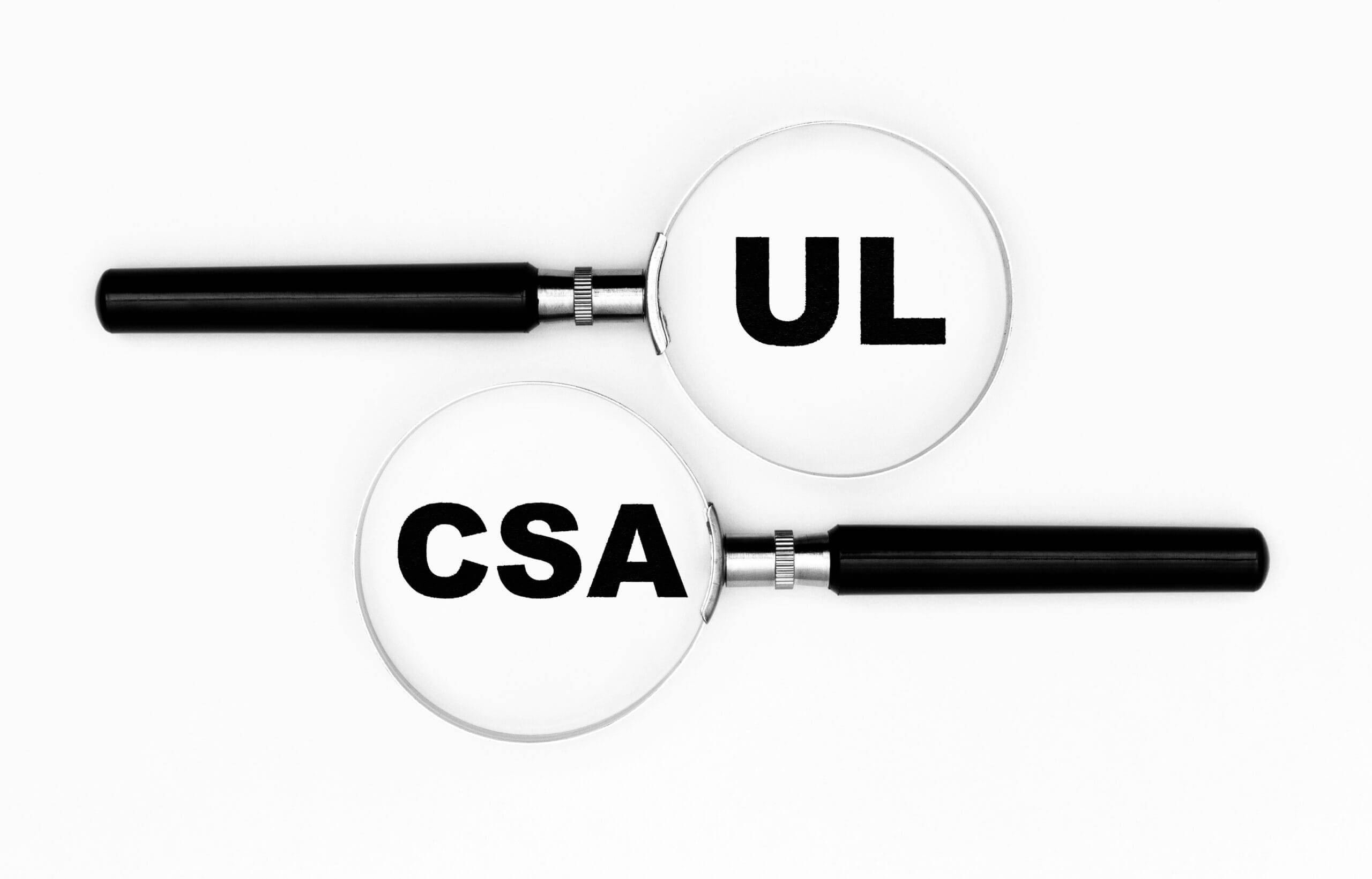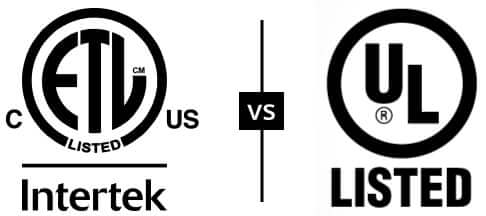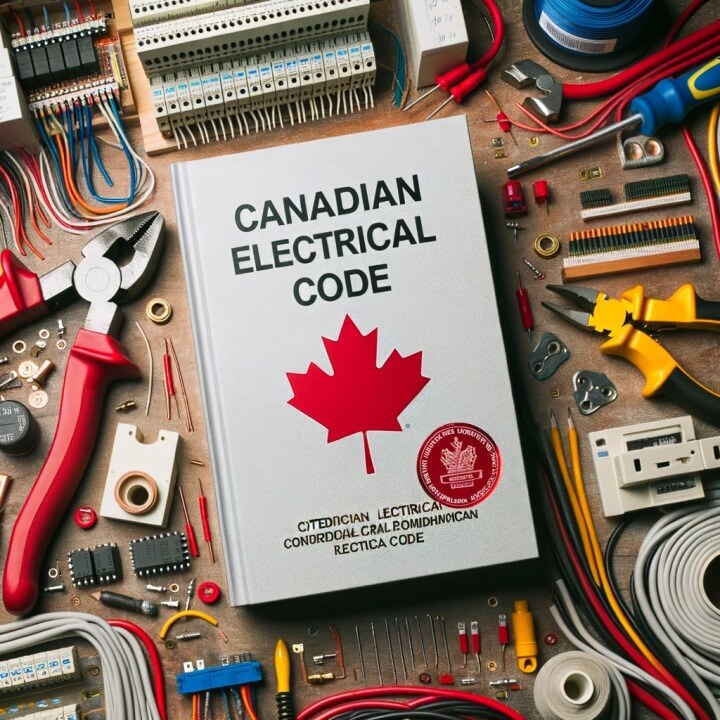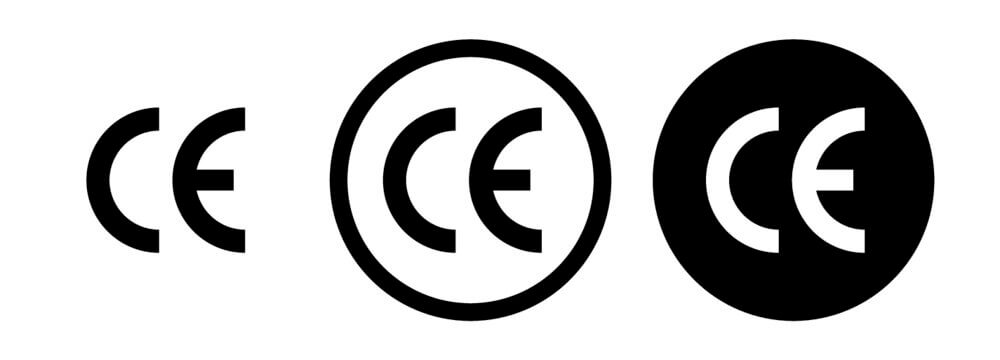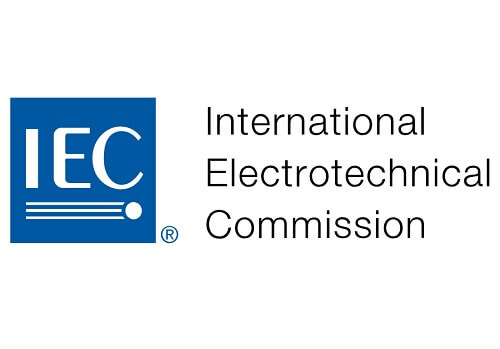电气组织和导管相关认证常见问题解答,您需要知道的每件事
In industries dominated by electrical products, such as the electrical conduit industry, adhering to stringent manufacturing standards is absolutely essential. Ensuring that these products are rigorously tested and certified for quality is equally critical. This not only guarantees that the products are free from defects but also minimizes the risk of malfunctions that could lead to serious issues for users. Without established standards and certifications, the market would be flooded with substandard electrical products, increasing the likelihood of frequent malfunctions, damages, and even injuries.
As a leading electrical conduit manufacturer, we recognize the vital role that product certification plays in maintaining safety, quality, and compliance with industry regulations. When searching for a qualified electrical conduit or conduit manufacturer, understanding certification marks, testing laboratories, and related terms is crucial. Here’s a guide to help you navigate these aspects:
1. About SDO and Certification Bodies
Standards Development Organizations (SDOs) and Certification Bodies are essential components of the regulatory and quality assurance ecosystem, each playing a distinct yet complementary role. SDOs are primarily responsible for creating and maintaining standards that outline the specific requirements, guidelines, and characteristics that products, services, and systems must meet. These standards ensure consistency, safety, and quality across industries and are developed through a consensus process involving various stakeholders, including industry experts, government agencies, and consumer representatives.
SDOs, such as the American National Standards Institute (ANSI), the International Organization for Standardization (ISO), and ASTM International, focus on setting the rules and guidelines that industries should follow. These standards are often voluntary unless adopted by regulatory bodies, but they serve as the foundation for ensuring that products and services are reliable and safe. The primary output of SDOs is the publication of these standards, which provide a framework for manufacturers and service providers to ensure quality and interoperability.
On the other hand, Certification Bodies play the crucial role of ensuring that products, systems, or services meet the standards set by SDOs. They are independent, third-party organizations authorized to conduct testing, inspections, and audits. Certification Bodies such as UL (Underwriters Laboratories), CSA (Canadian Standards Association), and ETL (Intertek) assess products to verify that they comply with the relevant standards and regulations. After rigorous testing, they issue certifications that confirm a product’s compliance, often indicated by a certification mark like the UL mark or CSA mark.
Certification Bodies do more than just test products; they provide an essential layer of assurance to consumers, manufacturers, and regulatory agencies. Their certification marks are widely recognized symbols of quality and safety, offering consumers confidence that the products they purchase meet rigorous standards. For manufacturers, certification is a crucial step in product development and market entry, ensuring compliance with legal requirements and enhancing marketability.
In summary, while SDOs set the guidelines and standards for industries to follow, Certification Bodies validate adherence to these standards through testing and certification. Both entities are vital in maintaining product safety, quality, and consumer trust. Together, they create a system where standards are not only defined but also effectively enforced, ensuring that products in the market are safe, reliable, and of high quality.
2. What is UL Certification?
Underwriters Laboratories (UL) is a leading global safety certification organization that has been ensuring product safety since its establishment in 1894. UL’s primary mission is to create a safer world by developing rigorous safety standards and conducting comprehensive tests on a variety of products, including electrical components, household appliances, industrial machinery, and more.
UL Mark: The UL mark is a symbol of trust and safety that indicates a product has undergone stringent testing and meets UL’s safety standards. This mark is primarily recognized in the U.S. and is crucial for products being marketed in this region. The presence of the UL mark on a product means it has been evaluated for potential risks such as electrical shock, fire hazards, and mechanical dangers, ensuring that it is safe for consumer use.
Global Impact: While UL certification is a requirement for many products in the U.S., its influence extends far beyond the American market. Many countries and industries recognize UL as a benchmark for product safety. This global recognition allows manufacturers with UL-certified products to access international markets more easily, as the UL mark often meets or exceeds the safety requirements of other regions.
Testing Process: UL’s testing process is thorough and involves multiple stages, including the evaluation of product design, materials, and performance under various conditions. Products are subjected to stress tests to ensure they can withstand everyday use and potential emergencies. For electrical products, UL tests for issues like short circuits, overloading, and resistance to environmental factors such as moisture and heat. UL also conducts regular inspections of manufacturing facilities to ensure ongoing compliance with their standards.
3. What is cUL Certification?
The cUL mark is the Canadian equivalent of UL certification, indicating that a product meets the safety standards required by the Canadian Electrical Code (CAN/CSA 22.1-12). Products with the cUL mark have been tested and certified to be safe for use in Canada, following the country’s specific regulatory requirements.
Market-Specific Considerations: Manufacturers looking to sell their products in both the U.S. and Canada must obtain both UL and cUL certifications to ensure compliance with the safety regulations in each country. This dual certification process guarantees that products meet the safety criteria necessary for entry into both markets. Without the appropriate certification, products may face regulatory hurdles, leading to delays in market entry or potential recalls.
Labeling: Products certified for both markets often carry dual UL and cUL marks, which clearly indicate their compliance with safety standards in both the U.S. and Canada. This dual labeling helps consumers, retailers, and regulators quickly identify products that are safe and approved for use in both countries, simplifying the purchasing and regulatory approval processes.
4. What’s the Difference Between UL and cUL?
Although both UL and cUL certifications are issued by Underwriters Laboratories, they serve different markets. UL certification applies to products intended for the U.S. market, while cUL certification is for products aimed at the Canadian market. Each certification adheres to the specific safety and performance standards relevant to the respective country, particularly in testing requirements, market-specific considerations, and labeling and marking practices.
National Standards: UL certification adheres to standards set by U.S. regulatory bodies, while cUL certification follows Canadian standards. Although these standards are closely related, they reflect the unique safety and performance criteria of each country. For instance, certain materials or design aspects that are acceptable under U.S. standards may require additional testing or modifications to meet Canadian standards.The electrical voltage standards, wiring practices, and other safety regulations may differ between the U.S. and Canada.
Testing Procedures: The testing procedures for UL and cUL certifications can vary slightly due to the different regulatory environments. Canadian standards often incorporate elements influenced by European norms, leading to additional tests or different criteria for certain types of equipment. This might include specific requirements for electrical insulation, fire resistance, or environmental resilience that differ from those used in the U.S.
Regulatory Compliance: Products intended for sale in the U.S. must comply with UL standards, while those marketed in Canada need to meet cUL requirements. This distinction is crucial for manufacturers aiming to enter both markets, as obtaining both certifications can streamline cross-border sales and ensure broader market acceptance.
Consumer Expectations: In both countries, consumers and regulatory bodies often expect products to carry the appropriate certification mark. In Canada, the presence of a cUL mark can instill greater confidence in the product’s safety and compliance with local standards, just as the UL mark does in the U.S.
Market Penetration: Products certified with only one mark may face challenges in entering the other market.
Dual Marking: Some products may carry both the UL and cUL marks if they have been certified for both markets. This dual marking indicates that the product meets the safety standards of both countries, which can be particularly beneficial for products sold in both the U.S. and Canada.
UL vs. cUL Marks: The labeling for UL and cUL certifications differs to indicate the specific market for which the product has been certified. A product certified for the U.S. market will bear the UL mark, while a product certified for Canada will display the cUL mark. This distinction is critical for ensuring that products are easily identifiable as compliant with the appropriate national standards.
There is a misconception that CSA certified products are only for use in Canada, and cannot be sold or installed in the U.S., while UL Listed products are for the United States and global use. Depending on certification, both CSA and UL products can be used locally and internationally.
5. What is the Difference Between UL Listed and UL Recognized?
The UL Listed and UL Recognized marks are both certification indicators provided by Underwriters Laboratories (UL), a global safety consulting and certification company. These marks signify that a product or component has met specific safety standards, but they apply to different types of products and serve distinct purposes in the manufacturing and consumer markets.
UL Listed certification is applied to fully functional, standalone products that have been tested and proven to meet the necessary safety standards for a specific intended use. This mark is commonly found on end-user products such as household appliances, electronic devices, and industrial equipment. The UL Listed mark assures consumers, retailers, and regulatory authorities that the product is safe for use and complies with all relevant safety requirements. Products with this certification have undergone comprehensive evaluation, including testing for fire, electric shock, and other potential hazards.
On the other hand, UL Recognized certification applies to components or materials intended to be used within a larger system or product. These could include parts like circuit boards, power supplies, plastics, or wiring. The UL Recognized mark indicates that the component meets certain safety standards but may require further evaluation when integrated into a final product. This certification is particularly important for manufacturers and system integrators, as it helps them select reliable and compliant components during the product development process. Using UL Recognized components can streamline the certification process for the final product, but the complete product will still need to undergo its own evaluation to achieve UL Listed status.
6. What is CSA Certification?
CSA Group (formerly the Canadian Standards Association) is a leading organization in Canada responsible for developing standards and certifying products to ensure they meet safety, health, and environmental requirements. CSA certification is essential for products intended for the Canadian market, particularly for electrical and electronic devices, appliances, and industrial equipment.
CSA Mark: The CSA mark is a well-recognized symbol in Canada, indicating that a product has been thoroughly tested and certified to meet specific safety and performance standards. For electrical products, the CSA certification ensures that the item complies with the Canadian Electrical Code and other relevant standards, reducing the risk of electrical fires, shocks, and other hazards.
Global Recognition: CSA certification is not only recognized in Canada but also carries significant weight internationally. Many countries and industries view CSA-certified products as reliable and safe, which can enhance a product’s marketability outside of Canada. This global recognition allows manufacturers with CSA-certified products to expand their reach into international markets more confidently.
Market Preference: In some cases, Canadian consumers and regulators may prefer CSA-certified products because the CSA Group is a homegrown organization with deep roots in Canadian safety standards. However, both certifications are acceptable for most regulatory purposes, and manufacturers can choose the one that best aligns with their market strategy.
7. What’s the Difference Between CSA and cUL?
Both CSA and cUL certifications indicate compliance with Canadian safety standards, but they are issued by different organizations. CSA certification is granted by the CSA Group, while cUL certification is issued by Underwriters Laboratories for products that meet Canadian standards. Although both certifications are respected in Canada, CSA is often considered the more traditional, locally recognized certification, while cUL is part of the broader UL system, which also covers the U.S. market.
8. What’s the Difference Between CSA and UL?
Both the CSA and UL are Nationally Recognized Testing Laboratories (NRTLs) that test the safety and efficacy of certain types of products. In fact, CSA certification and UL certification are practically synonymous. Both organizations are accredited by OSHA (Occupational Safety and Health Administration) and ANSI (American National Standards Institute) to act as NRTLs.
Both companies, CSA and UL signed a Memorandum of Understanding which defines the mutually acceptance for tests and investigations in accordance to defined standards.
When it comes down to it, CSA and UL are simply two different organizations that test to the same set of standards. In either case, a product certified through one of these NRTLs complies with industry standards for safety and performance.
The Memorandum of Understanding agreement between the two organizations simplifies the certification process for companies who desire U.S. and/or Canadian marks. If a company requires the CSA or the UL mark, it can ask for the approval by the CSA “Canadian Standards Association” or by the UL “Underwriters Laboratories Inc.”.
9. What is NRTL ?
A NRTL (pronounced “nurtle”) is a Nationally Recognized Testing Laboratory accredited by the Occupational Safety and Health Administration (OSHA) as an approved certifier of specific industry standards. OSHA accreditation as a NRTL guarantees that an organization meets the requirements of 29 CFR 1910.7. Each NRTL is accredited by OSHA for a particular scope of test standards and has its own unique registered certification mark, which a manufacturer is authorized to place on a certified product.
If a manufacturer plans to sell or distribute electrical equipment in the United States, it must show their product is safe. This is done by obtaining certification through an OSHA-approved Nationally Recognized Testing Laboratory.
The NRTL can test the given electrical product to a specific national standard, which demonstrates that the product complies with the requirements to sell within the United States. Once approved, the NRTL authorizes the manufacturer to apply the NRTL mark to all future factory production. The only difference between the various NRTL marks lies in the services of the testing laboratories behind them.
10. What is ETL ?
The ETL certification works like UL in the sense that it also provides a stamp that a product is solid and in compliance with set standards.
ETL is a testing laboratory with its headquarters in London, specializing in various types of testing including benchmark performance, electromagnetic compatibility, and product safety for electronics. Founded by Thomas Edison in 1896, ETL has a long history of ensuring that products meet safety and performance standards. The organization now operates over 30 offices and laboratories worldwide, adhering to the same principles that Edison established, focusing on proprietary product, material, and component safety-a company that used to be called “Edison Testing Laboratories.”
11. What is the Difference ETL and UL?
ETL Listed Marks and UL Marks bear similarities in that both stem from NRTL-certified testing to ensure electronic products are safe for public use. However, both testing methods differ in testing methodologies and the benchmarks that determine product safety.
The ETL certification holds water mostly in North America as well. However, a major difference between UL and ETL is that this one has a bit of a broader global appeal.
An ETL Verified mark with a “U.S.” identifier at the 4 o’clock position means the product has been identified as holding compliance with U.S. safety standards only, as defined by Title 29 CRF.
An ETL verified mark with a “C” in the 8 o’clock position has been deemed in compliance with only Canadian product safety standards. Products bearing both a “US” and a “C” are in compliance with both U.S. and Canadian product safety standards.
12. What are NEMA Standards?
The National Electrical Manufacturers Association (NEMA) is an influential organization that develops standards for electrical products, including ratings for electrical enclosures, switches, and other equipment used in a variety of environments. NEMA standards are widely used across the U.S. and are essential for ensuring the safety and reliability of electrical systems in both residential and industrial settings.
NEMA Ratings: NEMA ratings are a critical aspect of the standards, specifying the protection level that an electrical enclosure provides against environmental factors such as dust, water, chemicals, and physical impact. For example, a NEMA 4 enclosure is designed for both indoor and outdoor use and provides protection against water ingress from rain, sleet, and hose-directed water. Higher ratings, such as NEMA 6P, indicate protection against submersion in water and exposure to corrosive agents.
13. What’s the Difference Between NEMA and UL?
The National Electrical Manufacturer Association (NEMA) and Underwriters Laboratories (UL) are the two governing agencies commonly referenced in North America. Both provide oversight to assure an enclosure meets or exceeds a determined degree of protection. Both define enclosure designs, what contaminants each design can provide protection for, and how each design is tested to assure compliance with its respective rating or type.
The most significant difference between NEMA rated enclosures and a UL type rated is how testing is done and the compliance process. NEMA rated enclosures are self-certified by the manufacturer.
14. What are ASTM Standards?
ASTM International, formerly known as the American Society for Testing and Materials, is a globally recognized leader in the development and delivery of voluntary consensus standards. These standards cover a wide range of materials, products, systems, and services, with a focus on ensuring quality, safety, and performance across various industries.
Scope and Application: ASTM standards are used worldwide to improve product quality, enhance safety, facilitate market access and trade, and build consumer confidence. They cover a vast array of industries, including construction, petroleum, textiles, and consumer products. In the context of electrical conduits, ASTM standards ensure that materials like PVC used in conduit manufacturing meet specific criteria for durability, chemical resistance, and other performance characteristics.
Global Impact: ASTM standards are often referenced by other standards organizations and regulatory bodies globally, making them essential for manufacturers looking to ensure their products meet international benchmarks. Compliance with ASTM standards can also facilitate easier market entry, as products are more likely to be accepted across multiple regions.
15. What’s the Difference between ASTM Standard and UL ?
Underwriters Laboratories (UL) and ASTM International are both integral to maintaining high standards in various industries, but their functions and focus areas are distinct. UL specializes in product safety testing and certification. It develops rigorous safety standards across a wide range of product categories, including electrical equipment and consumer goods. UL’s primary goal is to ensure that products are safe for use by establishing performance criteria and conducting thorough testing and inspections. Products that meet these criteria receive the UL Mark, signaling compliance with stringent safety requirements.
ASTM International, on the other hand, is renowned for creating voluntary consensus standards that focus on the technical specifications and performance characteristics of materials, products, and systems. Unlike UL, ASTM does not offer certification services but instead provides detailed guidelines and methodologies for evaluating product quality and consistency. ASTM standards cover a broad spectrum of industries, including construction, energy, and manufacturing. These standards are intended to ensure that products and materials meet specific performance benchmarks, promoting reliability and interoperability.
The differences in scope and certification processes between UL and ASTM highlight their unique roles. UL’s standards are primarily concerned with safety, addressing potential hazards and ensuring that products meet comprehensive safety criteria. In contrast, ASTM’s standards emphasize technical and performance aspects rather than safety certification. UL’s certification process involves rigorous testing and periodic audits to ensure ongoing compliance, whereas ASTM provides guidelines that manufacturers use for internal quality control and product development. Understanding these differences allows businesses to effectively navigate the standards relevant to their products and industries. Differences between ASTM and other laboratories in the same way, such as CSA, ETL , and etc.
16. What’s the Role of NEC (National Electrical Code)?
The National Electrical Code (NEC) also known as NFPA 70. is a vital set of guidelines in the United States that governs the safe installation of electrical wiring and equipment. It is developed by the National Fire Protection Association (NFPA) and is widely adopted across the U.S. as a standard for ensuring electrical safety in residential, commercial, and industrial buildings.
NEC Compliance: Compliance with the NEC is mandatory for all electrical installations in the U.S. The code covers everything from the correct installation of conduits and cables to grounding and bonding, circuit protection, and more. Adherence to NEC guidelines is crucial for preventing electrical fires, reducing the risk of electrical shock, and ensuring the overall safety of electrical systems.
Global Influence: While the NEC is specific to the United States, its influence extends beyond American borders. Many other countries and regions look to the NEC as a model for their electrical codes, adopting similar standards to ensure safety and reliability in their electrical installations.
17. What’s the Role of CEC (Canadian Electrical Code)?
The Canadian Electrical Code (CEC) is a comprehensive set of regulations and standards designed to ensure the safe installation, operation, and maintenance of electrical systems in Canada. Developed by the Canadian Standards Association (CSA), the CEC sets out the minimum requirements for electrical safety in residential, commercial, and industrial settings. It covers a wide range of topics, including wiring methods, grounding, equipment specifications, and the installation of electrical devices.
The CEC is updated regularly to reflect advances in technology, changes in safety practices, and new industry needs. Compliance with the CEC is mandatory across Canada, and the code is often adopted into provincial and territorial laws, making it a legal requirement for all electrical work. It is designed to protect both the public and electrical workers from electrical hazards such as shock, fire, and explosions.
While the CEC shares many similarities with the U.S. National Electrical Code (NEC), there are specific differences that reflect Canada’s unique regulatory environment and safety standards. These differences mean that electrical installations compliant with one code may not fully meet the requirements of the other, correlation of technical requirements between the two Codes is ongoing.
18. What is CE Certification?
The CE mark is a mandatory conformity marking for products sold within the European Economic Area (EEA). It signifies that a product complies with the essential requirements of relevant European health, safety, and environmental protection legislation, which are designed to ensure consumer safety and promote free trade within the EEA.
Scope of CE Marking: The CE mark applies to a wide range of products, including electrical equipment, medical devices, machinery, and construction products. For electrical products, the CE mark indicates compliance with directives such as the Low Voltage Directive (LVD) and the Electromagnetic Compatibility (EMC) Directive, which cover safety and electromagnetic interference issues.
Compliance: To affix the CE mark, manufacturers must ensure their products meet all applicable EU directives and standards. This process often involves rigorous testing, documentation, and, in some cases, third-party certification, depending on the product category and associated risks. The CE mark not only facilitates free trade within the EEA but also serves as a guarantee to consumers that the product meets high safety and quality standards.
Market Access: The CE mark is essential for manufacturers looking to sell their products in the European market. Without it, products cannot legally be marketed within the EEA, which could limit a company’s growth potential. Additionally, the CE mark is recognized in some non-EU countries, which may accept it as evidence of compliance with their own safety standards.
19. What are IEC Standards?
The International Electrotechnical Commission (IEC) is a globally recognized organization that develops international standards for electrical, electronic, and related technologies. IEC standards aim to ensure the safety, compatibility, and efficiency of products worldwide, facilitating international trade and innovation in the electrical and electronics industries.
Global Standards: IEC standards are adopted by many countries around the world, providing a consistent framework for the design, testing, and performance of electrical products. This harmonization of standards helps manufacturers reduce the cost and complexity of bringing new products to market by eliminating the need for multiple, country-specific certifications.
Relevance to the Industry: For manufacturers, adhering to IEC standards is crucial for ensuring that their products can compete in the global marketplace. Products that meet IEC standards are often accepted across multiple markets without the need for additional certification, which streamlines the approval process and speeds up time-to-market. Additionally, IEC standards contribute to the overall reliability and safety of electrical systems worldwide, promoting consumer confidence and industry growth.
20. What is ISO?
The International Organization for Standardization (ISO) is a global, non-governmental entity established in 1947 and headquartered in Geneva, Switzerland. Its primary function is to develop and publish a comprehensive range of standards that cover various sectors, from healthcare and technology to manufacturing and environmental management. ISO’s standards aim to ensure that products, services, and systems are safe, reliable, and of high quality, thereby facilitating international trade and fostering consistency across borders.
Notable ISO standards include ISO 9001, which focuses on quality management systems, and ISO 14001, which addresses environmental management. ISO standards are integral to ensuring safety, reliability, and quality across diverse applications. The ISO’s efforts in standardization help streamline global trade by providing a common framework for evaluating and maintaining product and service quality.
21. What is AS/NZS Standard?
The AS/NZS Standards refer to a set of technical standards developed jointly by Standards Australia (AS) and Standards New Zealand (NZS). These standards are designed to ensure the safety, reliability, and efficiency of products, services, and systems in Australia and New Zealand. The AS/NZS Standards cover a wide range of areas, including construction, engineering, information technology, environmental management, and consumer goods.
The collaboration between Standards Australia and Standards New Zealand began in the early 1990s with the aim of harmonizing standards between the two countries. This initiative was driven by the desire to facilitate trade, enhance product safety, and reduce regulatory barriers. Over the years, the partnership has resulted in the development of numerous joint standards that are recognized and adopted in both countries.
The AS/NZS 2053 standard specifies the requirements for metal and non-metal conduits and fittings used in electrical installations in these regions. This standard ensures that conduits and fittings provide adequate protection for electrical cables, meeting the safety and environmental requirements specific to Australia and New Zealand.
AS/NZS 2053 covers various aspects of conduit performance, including material strength, resistance to environmental factors (such as UV radiation, chemicals, and temperature extremes), and ease of installation. It also addresses the mechanical properties of conduits, such as impact resistance and flexibility, ensuring that they can withstand the rigors of installation and long-term use.
Ctube is a reputable manufacturer and supplier of PVC conduit, pipe, and fittings, specializing in providing innovative solutions for construction projects. Based in China.
We have been awarded ISO 9001, ISO 14001 and ISO 45001 certifications, assuring our customers of the highest standards in quality control and environmentally sustainable practices. Moreover, our products carry international certifications such as UL, CSA, AS/NZS 2053, CE, and IEC, further validating their reliability and compliance.
If you have project requirements, please contact us.
电气组织和导管相关认证常见问题解答,您需要知道的每件事 阅读更多 "






